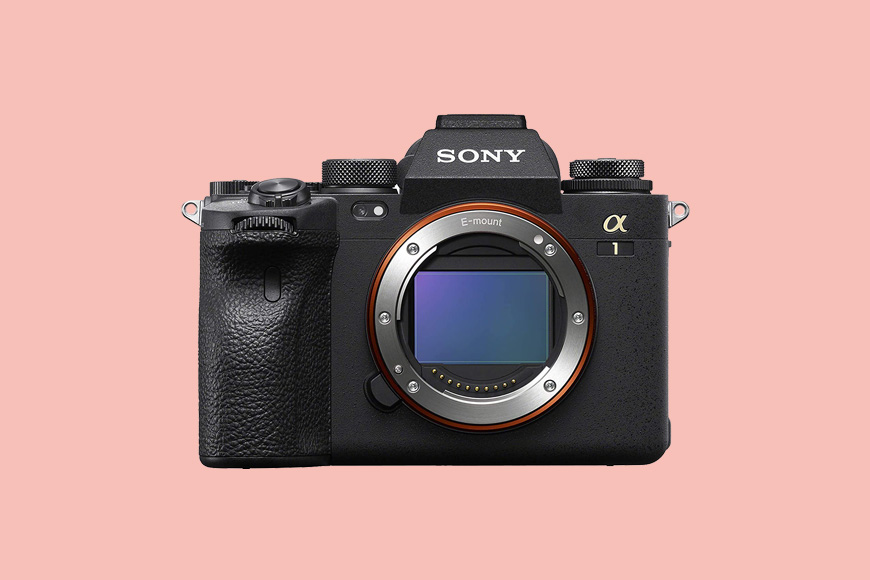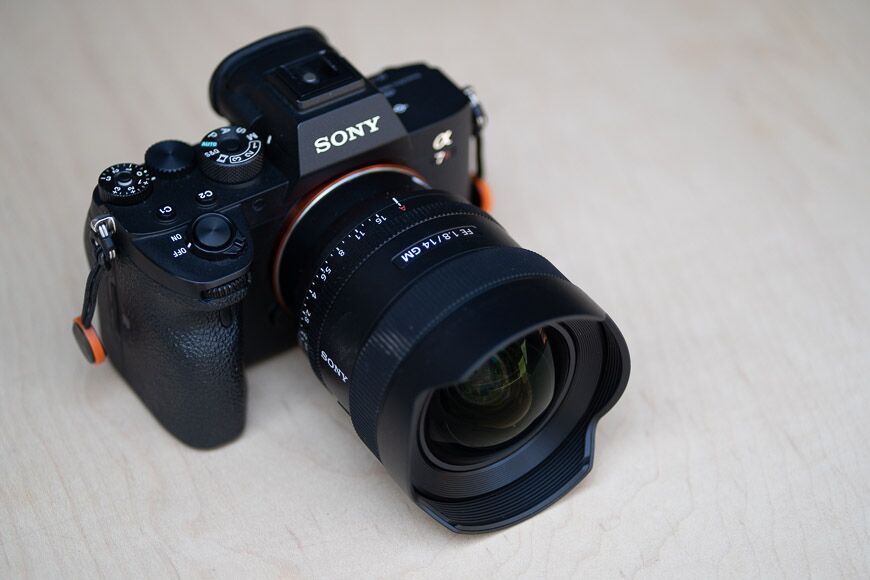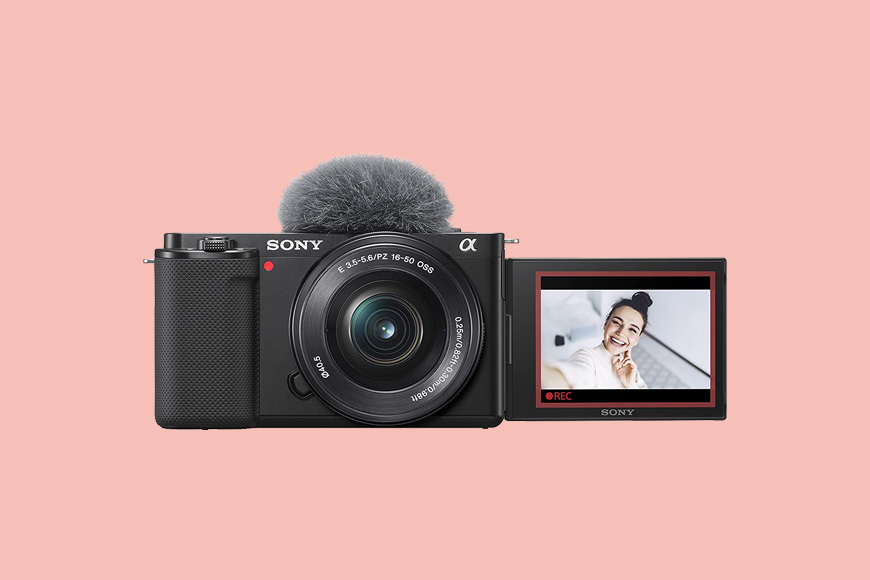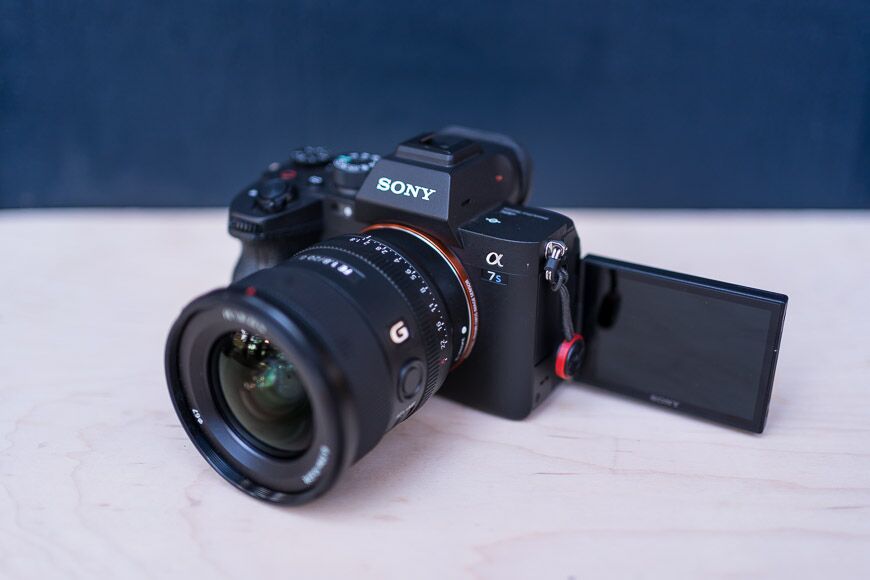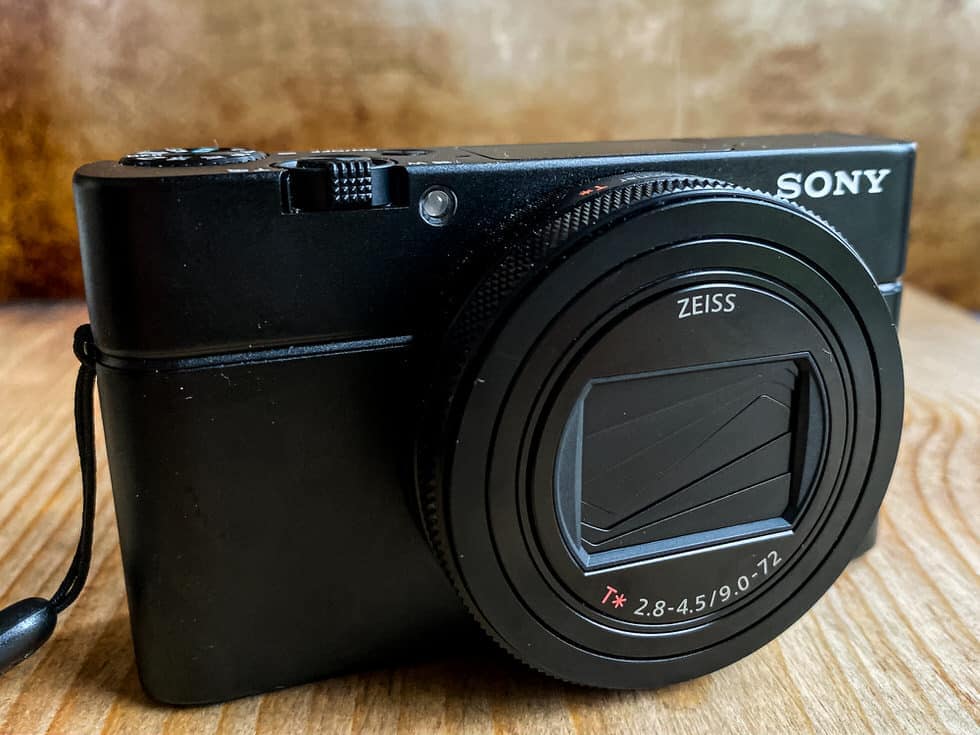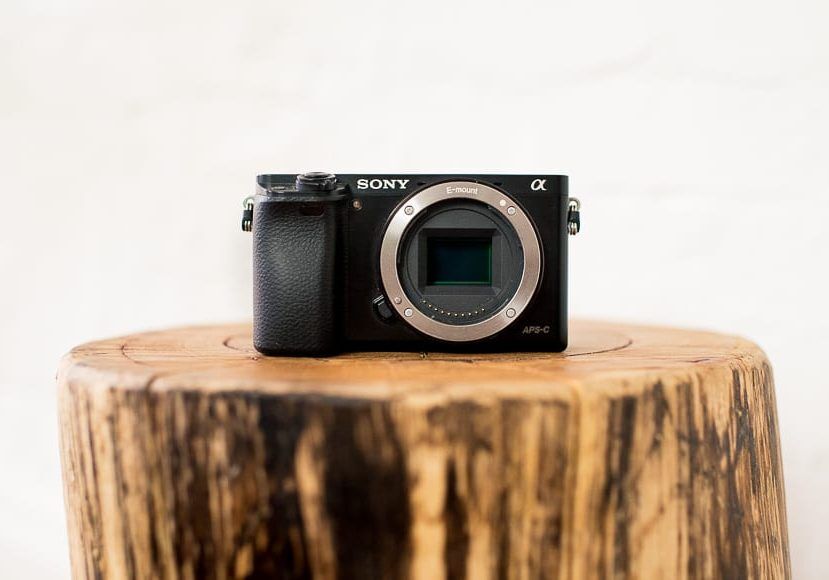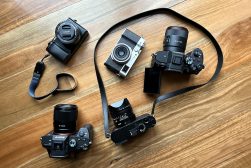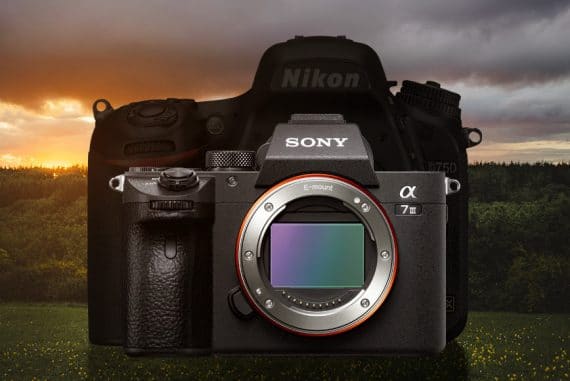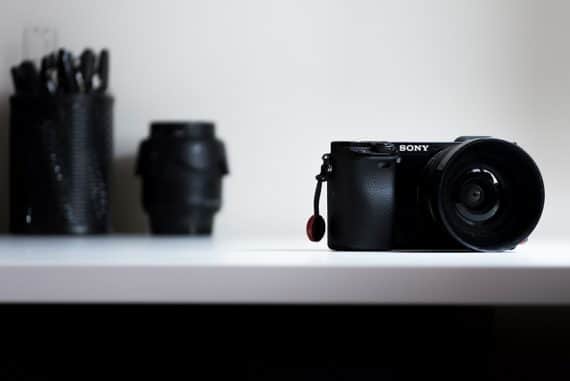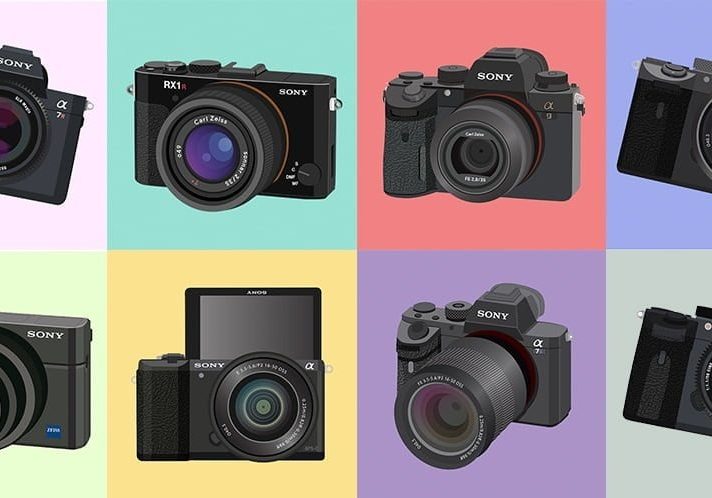
Best Sony Camera in 2024 for Photographers & Film Makers
Best Sony Cameras: Dive into a curated list of top-performing Sony Alpha cameras, showcasing cutting-edge technology and unmatched image quality.
Camera Gear Guides | Camera Guides | By Mark Condon and Ash Darrow | Last Updated: January 4, 2024
This guide to the best Sony cameras has been updated to include all the latest releases from the Alpha mirrorless range.
I switched to shooting predominantly with Sony cameras in 2019 (from Nikon) and haven’t looked back.
Since then, I’ve used numerous Sony APS-C and full-frame mirrorless cameras in my personal and professional work.
Yes, there are plenty of great cameras produced by other brands, but I’ve decided to stick with Sony and its wide selection of E-mount lenses.
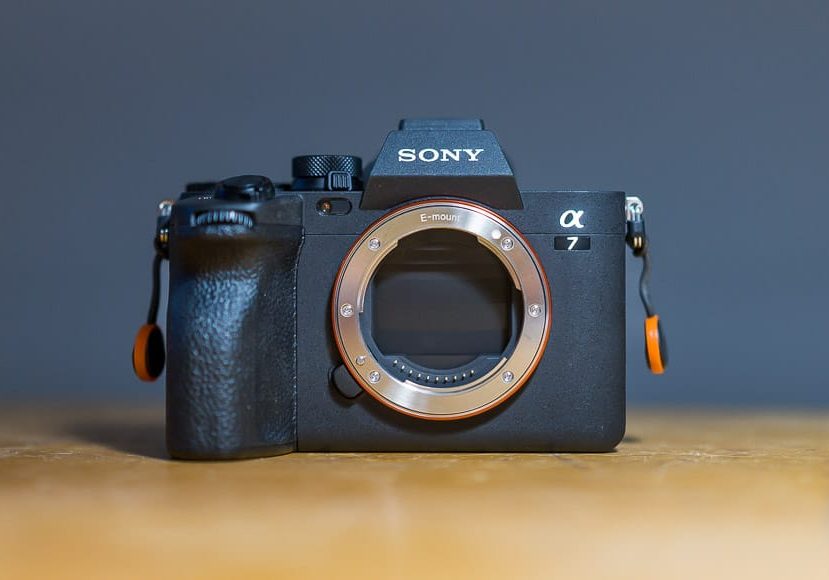
The best value all purpose Sony camera for pros and serious amateurs who demand the perfect balance of excellent image quality and fast performance.
To say that there’s a lot of useful technology housed in the average Sony Alpha camera is a huge understatement.
However, one thing that can confuse people (aside from their notorious menus!) is the wide variety of Sony cameras in the range.
Choosing the right Sony photography camera for your needs is a rather daunting task.
That’s why we’ve put together this guide to help you choose the right model for your needs.
What Are the Best Sony Cameras in 2024?
| Image | Product | Features | |
|---|---|---|---|
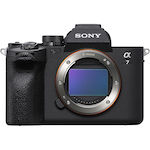 | Sony a7IVOUR #1 CHOICE |
| Check AMAZON Price → Check MOMENT Price → |
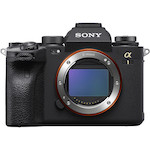 | Sony a1BEST ALL ROUND |
| Check AMAZON Price → Check MOMENT Price → |
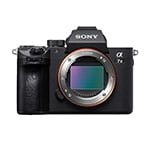 | Sony A7IIIBEST VALUE FULL FRAME |
| Check AMAZON Price → Check MOMENT Price → |
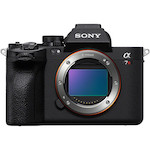 | Sony a7RVBEST FOR LANDSCAPE |
| Check AMAZON Price → Check MOMENT Price → |
 | Sony a6400BEST VALUE APS-C |
| Check AMAZON Price → Check MOMENT Price → |
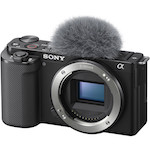 | Sony ZV-E10BEST FOR VLOGGING |
| Check AMAZON Price → Check MOMENT Price → |
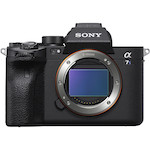 | Sony a7S IIIBEST FOR VIDEO |
| Check AMAZON Price → Check MOMENT Price → |
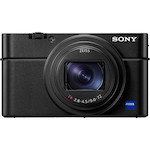 | Sony RX100 VIIBEST ALL ROUND POINT AND SHOOT |
| Check AMAZON Price → Check MOMENT Price → |
 | Sony a6000BEST BUDGET COMPACT |
| CHECK AMAZON PRICE → |
1. Sony a7IV – All Round Best Sony Mirrorless Camera for Professionals

- Newly designed 33MP Exmor R BSI CMOS Sensor
- Roughly 15 stops of dynamic range
- Bionz XR Processor handles 828 consecutive uncompressed images
- No video recording time limit
- Improved heat dispersal lowers risk of overheating
- Autofocus points cover an impressive 94% of the viewing area
- Fully rotatable LCD screen is great for filming yourself
- Uses newer less-confusing Sony menu
- Enhanced video features might not be for everyone
- Screen won’t tilt without being rotated first
Size: 127 x 96 x 74 mm (5 x 3.78 x 2.91″) | Weight: 657 g (1.45 lb / 23.17 oz) | Sensor: BSI CMOS Full frame | Megapixels: 61
If you want the best all-round Sony camera, look no further than the Sony a7 IV, which is what I’ve been shooting with since 2022.
This is Sony’s most popular line of mirrorless cameras, and they have pulled out all the stops when it comes to updating the new model. Some would even argue that this is Sony’s best camera.
The Sony a7 IV makes it easy to see why Sony caused so many photographers to switch from DSLR to mirrorless.
As with any good camera, I should start by talking about the image quality of the Sony a7 IV. The new 33MP Exmor R BSI CMOS Sensor provides outstanding image quality.
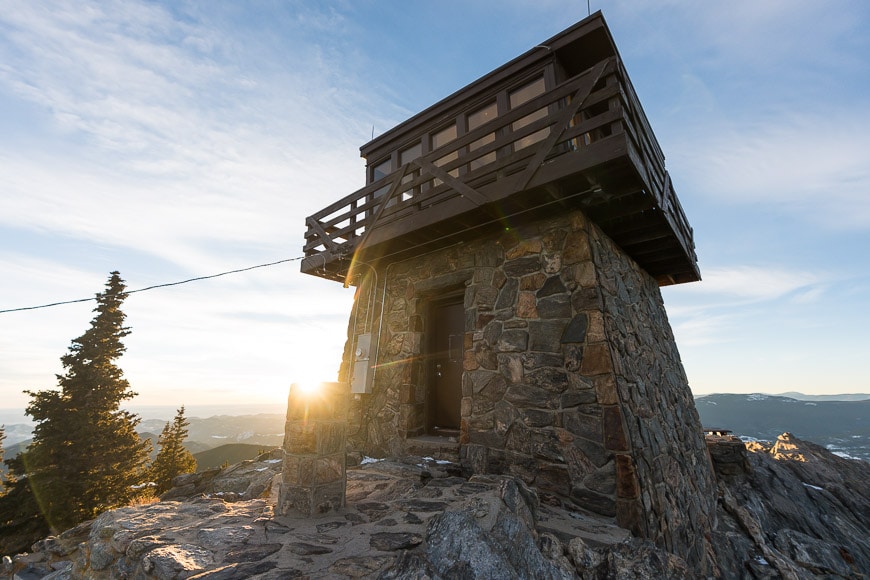
Sony A7IV + Sony 16-35mm f/2.8 | 1/1000 f2.8 ISO 100 | Marc Bergreen
As with most other Sony mirrorless cameras in this price range, the powerful sensor on the a7 IV really shines in low-light conditions. The Sony a7 IV has low noise throughout its entire ISO 100-51200 range.
Low light shooting often means camera shake, but the Sony a7 IV has a 5.5-stop effective 5-axis SteadyShot INSIDE stabilisation.
This protects against five separate types of camera shake during hand-held shooting.
This camera also has some of the most impressive video capabilities out of anything Sony has released. It can shoot 4K up to 60 frames per second with absolutely no time limit.
That’s right, no more shooting in awkward 30-second bursts. You can start rolling and keep shooting until you capture all of the footage you need without worrying about this camera overheating.
It’s been years since the first dual memory card digital cameras were released, and I’m happy to see two memory card slots on this camera.
It supports CFexpress Type A cards in one slot and SD cards in the other. The peace of mind I get from having a backup save for all of my wedding photography images is worth its weight in gold!
The autofocus is another standout feature of this camera. phase detection points cover a whopping 94% of the overall image area giving you nearly complete autofocus coverage.
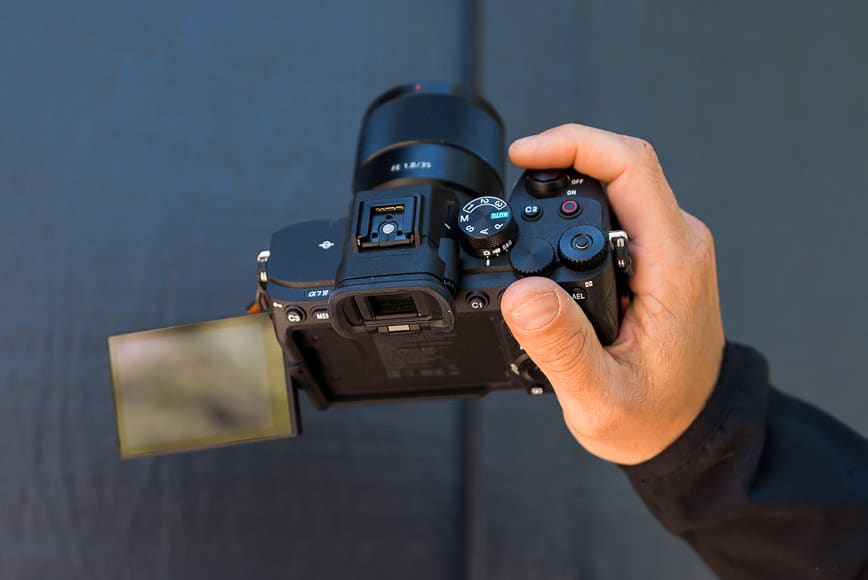
The rotating LCD is a great upgrade from the previous a7III model | Marc Bergreen
The autofocus isn’t just good because of its coverage. Sony has new autofocus technology that is backed by advanced algorithms that can track your subject more effectively than ever before.
I’ve had subjects walk in and out of frame, and autofocus still holds on even with all those changes in my composition. These features work just as well in photos as they do in videos.
That real-time focus has presets for humans, animals, and now even birds!
The AF Assist mode is a personal favourite of mine. This lets you use the advanced autofocus to catch your subject but then allows for instant manual adjustments so you can switch between subjects with ease.
The flip screen is another feature worth highlighting. The Sony a7 IV has a screen that can be tilted to almost any orientation.
This is great for recording your own social media content or for capturing low-angle photography shots. Either way, the flexibility of the touch screen means that you can get creative without having to be a contortionist.
This camera offers stunning performance for photographers and filmmakers alike while still staying within the scope of a reasonable budget – at least when compared to the Sony a1!
Among all the Sony professional cameras on this list, the a7 IV offers the best value for money in 2024.
Resources:
2. Sony a1 | Best Sony Camera for Professional Photography (Premium)
- A staggering 50 megapixels
- Shoots up to 8k video at 30fps
- Built in 5GHz Wi-Fi and Ethernet port
- Take clear shots even at ISO 102400
- Hybrid AF system covers 92% of the image area
- Dual memory card slots
- Weather-sealed design
- Uses newer less-confusing Sony menu
- One of Sony’s most expensive cameras
- Might be overkill for many photographers
Size: 128.9 x 96.9 x 69.7 mm (5.07 x 3.81 x 2.74″) | Weight: 1,460 g ( 3.22 lb / 51.5 oz) | Sensor: Full-Frame Exmor RS BSI CMOS Sensor | Megapixels: 50mp
The Sony a1 is a true flagship camera and represents the best of what Sony currently has to offer for photographers and videographers. If you want a camera that is ready for absolutely anything, this Sony a Series camera is the one for you.
The image quality on the Sony a1 is some of the best I’ve seen. The 50-megapixel Full-Frame Exmor RS BSI CMOS Sensor delivers crystal clear images within an impressive ISO range of 50-102400.
This camera is going to help you knock it out of the park when you’re shooting at weddings, events, or even concerts in dimly lit venues.
The autofocus system covers 92% of the image with a combination of 759 phase-detection points and 425 contrast-detection areas. The Sony a1’s AF system works for both photo and video applications.
The AF system is built to automatically focus and track eyes, whether your subject is human or animal. Wildlife photographers will definitely have an easier time keeping their subjects in focus even if they are constantly changing speed.
The video capability on the Sony a1 is nothing short of stunning. You can comfortably shoot in 4K even up to 120 frames per second, but this camera also shoots 8K at 30fps.
It’s got more than enough computing power to handle those large file sizes. It also has a useful library of different video codecs so you can optimize your shooting for social media or wherever else you’ll be displaying your footage.
I’m going to take a quick break from talking about the technical power of the Sony a1 to discuss the ergonomics and feel of this camera.
The smaller size of mirrorless cameras has definitely been a challenge for anyone used to do a larger and heavier, DSLR body. The Sony a1 actually has a little bit more weight to it making it feel more familiar in my hands.
This also helps it counterbalance larger lenses that might feel a little unbalanced on some of these smaller DS mirrorless bodies.
The magnesium alloy chassis and weather-sealed design of the Sony a1 also mean that I’m not too worried about taking this expensive piece of kit out into some rugged shooting conditions.
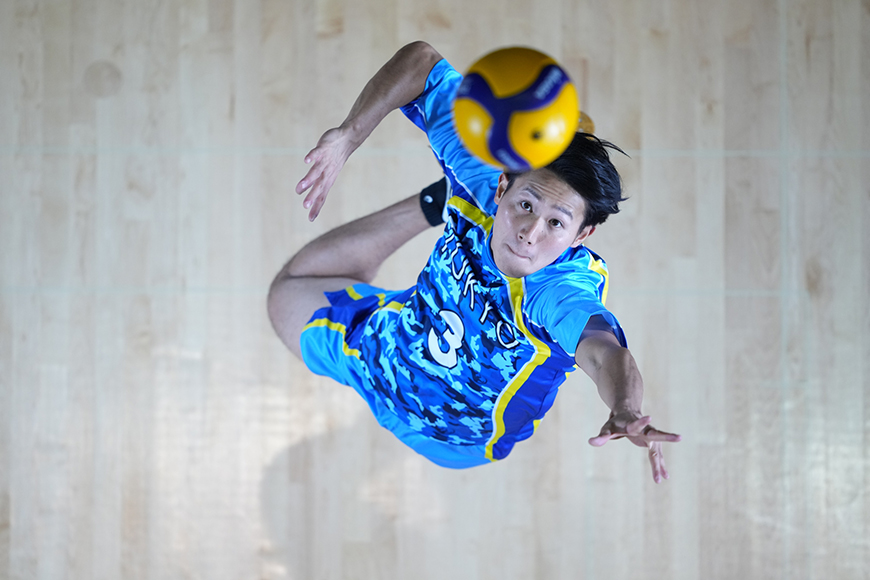
FE 400mm F2.8 GM OSS at 1/2500 sec. F2.8 | Sony
At this point, I know what all of the wedding and event photographers out there are thinking: Does the Sony a1 have two memory card slots?
The Sony a1 offers two memory card slots that can both CFexpress Type A and SD-type memory cards. You can shoot a once-in-a-lifetime event with the peace of mind that you have some backup in case one card doesn’t make it back home with you.
The Sony a1 was also built for optimized connectivity. Ports include USB-C, Micro USB, ethernet, PC Sync, and a few others. You’ve also got your choice of Wi-Fi, NFC, and Bluetooth for a cable-free connection.
Sony also updated the performance when it comes to syncing the Sony a1 with the Sony camera app ecosystem. This goes a long way to improve the performance of these apps and gives you more options when it comes to controlling your camera during a shoot.
There really is hardly anything negative to say about the Sony a1. This is an all-around powerhouse of a photography and filmmaking machine.
If you want to spare no expense and pick up the best of what Sony has to offer, you can’t go wrong with the Sony a1 – the best Sony mirrorless camera for professional photography if you have the money. Truly one of the best Sony cameras for photography.
3. Sony A7III | Best Value Sony Full Frame Camera
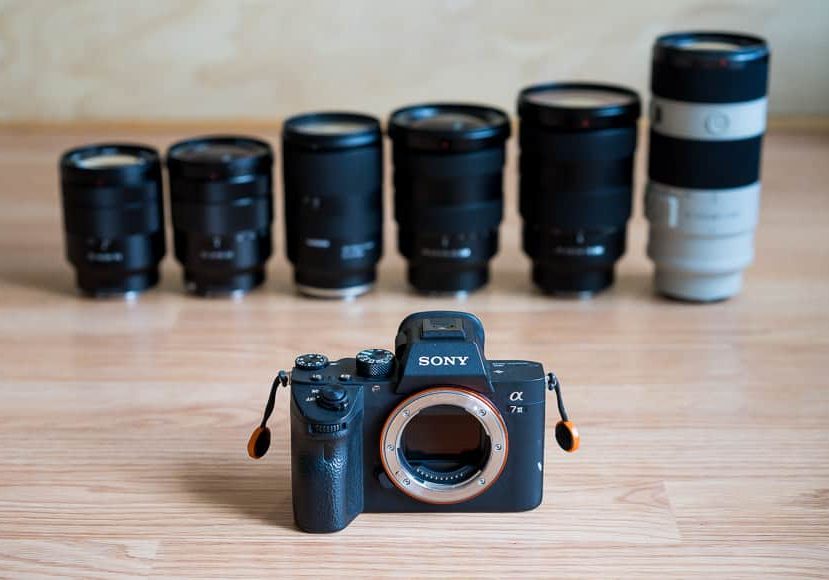
a7III | Marc Bergreen
- Sony 24.2 MP BSI full-frame image sensor
- Outstanding high ISO performance
- AF points cover 93% of the image
- Silent Shutter Mode
- Flip out touch screen great for catching unique shots
- Great value for money
- Poor ergonomics
- Uses confusing (old) Sony menu
Size: 127 x 96 x 74 mm (5 x 3.78 x 2.91″)
Weight: 650 g (1.43 lb / 22.93 oz)
Sensor: BSI CMOS Full Frame
Megapixels: 24
Size: 127 x 96 x 74 mm (5 x 3.78 x 2.91″) | Weight: 650 g (1.43 lb / 22.93 oz) | Sensor: BSI CMOS Full Frame | Megapixels: 24
Make no mistake – the Sony a7III is the camera that started a revolution. If there was ever a camera that caused most photographers to switch to a mirrorless system, this is most certainly it.
If you’re thinking about switching to the best Sony camera or contemplating a move to mirrorless from DSLRs, don’t waste your time anymore – the Sony a7III is pretty much your perfect full-frame digital mirrorless camera.
It’s one of the best Sony cameras with its own set of quirks, but for the most part, it’s ideal.
In fact, I’d go as far as to say that this is the best Sony camera for photography enthusiasts and even professionals (that isn’t the latest Sony camera) It won’t cost you an arm and a leg – particularly if you buy it second-hand.
Despite being the company’s ‘entry-level full-frame mirrorless digital camera, the Sony a7III is still the model that’s caused the most waves in the camera industry since its release in February 2018.
Sitting underneath the megapixel monster a7RIII/IV and the speed demon a9, two expensive full-frame cameras that, although enticing, are rather specific in their usage, the a7III offers class-leading technology at a surprisingly affordable price (see latest discounts here).
Under the hood of one of the best Sony cameras, everything revolves around a glorious Sony 24.2 MP BSI full-frame image sensor, which produces sharp, vivid, and contrasty JPEGs and RAW files with tons of dynamic range.
If you’re used to incredible high ISO performance coming from a flagship DSLR, you won’t be disappointed with the 50 all the way up to 204,800 ISO of the a7III. I can shoot all day at ISO 6400 if necessary, where images are impressively clean, with noise only creeping in slightly at ISO 12,800.
As for auto-focus capabilities, prepare to be blown away. With 693 phase-detection AF points offering 93% image coverage, real-time eye-AF, and 10FPS, any subject you miss will be down to pure user error!
Eye-AF, a feature now common on all recent Sony cameras, is akin to black magic. Locking onto a subject’s eyeball in the frame and staying glued to it until you’re ready to take the photo, Eye-AF is a feature on the Sony a7III that will have you wondering how you shot photos of people (or animals) without it before.
If you’re a wedding photographer or simply someone who appreciates the ability to shoot 100% silently, Silent Shutter Mode on the a7III will help you achieve those perfectly candid captures.
Silent shooting isn’t anything new on mirrorless digital cameras in 2024, but the sheer level of customization options on the a7III means you can quickly dive in and out of it at the touch of a button.
Then there’s the battery life of this stunning full-frame digital camera – this was the biggest jaw-dropper for me and allows me to shoot a 1,700-ish photo wedding on just one battery!
If you’re used to long DSLR-like battery life, the Sony a7III is leagues ahead of every other brand of mirrorless digital cameras in this department.
Compare this with even the very best that the other brands have to offer, and you’ll soon realise how far ahead of the industry Sony is with their technology.
Other notable features of one of the best Sony cameras include a flip-out touchscreen LCD (admittedly with rather limited functionality), dual memory card slots, 5-axis image stabilization, Wi-Fi NFC and Bluetooth, and a weather-sealed body.
All this adds up to a near-perfect mirrorless camera – so what about the downfalls of the Sony a7III? Is it truly the best of the best Sony cameras available from the leading digital publisher? There are only a few small things with this highly capable camera, and mostly they’re related to Sony in general.
Ergonomics will take a little getting used to, especially if you come from a DSLR. While it’s not a small camera, if you have large hands, you may need to invest in one of the many grips available, so your bottom finger can rest on something.
Then there’s the menu, which is typical of Sony – deep and confusing. It’ll take a while to get used to, but thank goodness for the ‘My Menu’ option, which helps you organise your most-used commands.
Hmm.. that’s pretty much it! I can’t think of any photographers, professional or otherwise, who’ve switched to this impressive camera and regretted their decision – most wish they’d done it sooner!
The bottom line is that you’re getting a massive amount of Sony camera technology for a very competitive price.
Yes, the Sony a7IV is newer and better in several ways, but it’s also a lot more expensive.
Resources:
4. Sony a7RV | Best Sony Camera for Landscape Photography
- 61mp sensor
- Pixel Shift Multi Shooting creates an effective 240.8mp image
- Ideal for capturing high detail for landscape prints
- Weather-sealed for rainy landscape shoots
- 8K at 24p is perfect for cinematic landscape b-roll
- Better color reproduction thanks to new sensors and software
- Tilting screen can accommodate L-bracket tripods
- Not enough built in landscape-specific modes
- Could have a higher max ISO
Size: 131.3 x 96.9 x 82.4 mm (5.2 x 3.8 x 3.2″) | Weight: 723 g (1.6 lb / 25 oz) | Sensor: Exmor R BSI CMOS Sensor | Megapixels: 61
Almost everything about the Sony a7RV makes it an ideal camera for anyone interested in capturing stunning landscape shots.
All Sony digital cameras can be used for landscape photography, or any other type of photography for that matter. However, this one is particularly well-suited.
I want to kick things off by talking about the body of this camera.
The magnesium alloy chassis is paired with comprehensive weather sealing that covers all of the ports and compartments, as well as the joints in the chassis.
I always get a little nervous when it starts to rain during the landscape shoot, but I’m confident that the Sony a7RV is going to handle even the toughest weather I’d be shooting in.
One of the most important things to look for in a landscape camera is resolution. The Sony a7RV offers 61 megapixels backed by the new Exmor R BSI Sensor and BIONZ XR Processor power.
This camera also does something very unique that sent it to the top of this list for anyone interested in landscape shooting. It can do Pixel Shift Multi Shooting.
Pixel Shift Multi Shooting captures several separate images in quick succession by physically moving the sensor of the camera in one-pixel or half-pixel increments. The resulting images can then be stitched together to create a single photograph with an effective megapixel resolution of 240.8.
That’s an image size of 19,008 x 12,672 pixels. Your landscape prints are going to have a level of detail like you’ve never had before when you’re shooting on the Sony a7RV.
This is also incredibly helpful if you plan on printing or displaying larger landscape photographs. This also means that you’ll be able to stitch together some of the most impressive panoramas I’ve ever seen.
There’s also a lot of overlap between shooting landscape photography and cityscapes, vehicles, and even working with subjects like people and animals.
The Sony a7RV excels at capturing this wide variety of subject material for when you want to mix things up and not just shoot traditional landscapes. The autofocus can even automatically detect and track Vehicles like planes, trains, and automobiles.
This makes it easier than ever before to add a little extra something to your landscape photography. You can even dabble in wildlife photography since this camera is capable of automatically detecting and tracking animals and birds.
With all of this said, the Sony a7RV is far from being a unitasker. This camera might be best for landscapes, but it is going to do a great job handling a wide range of video styles.
Capturing video has become more important for every photographer that I know. Even if video work isn’t your mainstay, it’s good to know that your camera can shoot a few frames in addition to capturing stunning photographs.
The Sony a7RV excels at video shooting 8K at 24 frames per second and 4K up to 60fps.
This means that the Sony a7RV is an excellent choice for anyone looking to capture landscape b-roll and establishing shots. You can even use this for serious documentary work and B-roll for movies.
All of these features come together to make the Sony a7RV my pick for the number one landscape Sony camera.
5. Sony a6400 | Best All Round Compact

- 11 fps burst rate
- Front facing LCD
- Excellent auto focus
- Great image resolution
- Improved low-light capabilities
- Extremely customizable
- Weather-sealed
- Good battery life
- Built-in bounceable flash
- Good Wifi/NFC
- USB Charging
- Questionable ergonomics
- Odd tilting LCD implementation
- No IBIS
- Only 1 UHS-1 card slot
- Slow buffer clearance
- 4k/30p is cropped
- Pronounced rolling shutter
Size: 120 x 67 x 60 mm (4.72 x 2.64 x 2.36″) | Weight: 403 g (0.89 lb / 14.22 oz) | Sensor: CMOS APS-C | Megapixels: 24
The Sony a6 range of APS-C sensor mirrorless cameras has been a favourite of a great many photographers the world over, ever since the release of the a6000 way back in 2014.
Since then, every release of a new a6xx body has seen some relatively small set of feature updates, typical of a camera that’s been updated so frequently.
Despite the more recent release of the Sony a6100, a6600 and a6700 cameras, I still believe the a6400 offers the best bang for the buck, proving that you don’t need the newest Sony camera all the time.
With the a6400, what has Sony brought to the table this time? Is it just a vlogging camera, or is there something there for us stills shooters too? I spent 2 months shooting with it to find out…
First off, everything revolves around a glorious 24.2-megapixel Exmor CMOS sensor, which provides an impressive ISO sensitivity range and excellent low-noise performance, especially for APS-C standards.
I was able to shoot comfortably at ISO 800 all night long and still obtain clean files and accurate colours.
Thanks to a front-end LSI and the latest BIONZ X image processor, Sony claims processing speeds that are 1.8x faster on the Sony a6400 when compared to its predecessors.
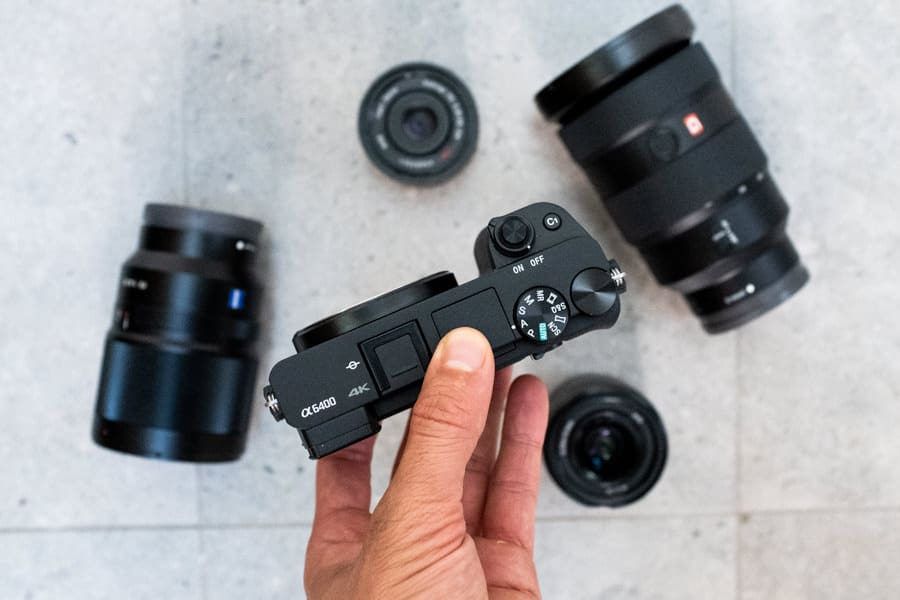
Sony FE (full frame) e-mount lenses can also be used on the Sony a6400, despite it being an APS-C format camera.
In practice, this means a faster buffer, allowing it to keep shooting 11fps for 46 RAW+JPG, 49 RAW, or 114 JPG – that’s pretty impressive when you consider everything’s kept in pin-sharp focus thanks to real-time Eye AF.
One downside, though, is the sluggish buffer performance – during testing, the buffer took around 40 seconds to clear 49 shots in burst mod, even with a fast memory card.
The Sony a6400 boasts a much-improved build quality, with the standout feature being a touch-enabled, 180-degree rotating LCD screen – much to the delight of vloggers and anyone who likes to take selfies!
There are surprisingly few cameras that offer a front-facing LCD screen, but the a6400 handles this relatively well, as long as you don’t need to mount a hot-shoe mic since the screen prevents you from doing this without a cage of some sort.
The 425 phase-detects points combined with that Real-time Eye AF (which even works on animals), and Real-time tracking for moving subjects has been dribbled down from the a6400’s full-frame big brothers and works pretty damn well indeed.
Sony really does make it much easier for photographers who shoot moving subjects, allowing the camera’s settings to get out of the way of capturing the image you want. – you just point… and shoot.
A big draw-card of the Sony a6400 over the other full-frame mirrorless cameras in the range is its compact size – choose your lens wisely, and you’ll be able to slide the whole thing in your jacket pocket, with less than half the weight of some of the bulkier options.

Great image quality and bokeh from the Sony a6400 when coupled with the Sony FE 28mm f/2.
As for lenses to use with the Sony a6400, I always tend to recommend small, lightweight primes over zooms – impressive as they are.
Something like the FE 28mm f/2, despite it being meant for a full-frame sensor, performs admirably on the a6400, offering a versatile 35mm-ish field of view.
If you want to stick to more affordable Sony e-mount lenses that have been made for the APS-C sensor, there’s a whole host of great ones available, all of which pair nicely with the a6400 – just choose wisely to avoid unbalancing your camera body.
Price-wise, the Sony a6400 is definitely a premium crop sensor camera, but in my opinion, it could actually be priced even higher on the impressive features included.
As is typical with Sony cameras, there are tons of features somewhat hidden in the confusing menu, but when you have the a6400 set up as you want, you can use the camera buttons and dials most of the time.
I also really enjoyed being able to focus and shoot just by touching the screen – perfect for remaining inconspicuous while shooting ‘from the hip’.
Resources:
6. Sony ZV-E10 – Best Sony Camera for Vlogging
- 4K up to 30fps
- Very portable
- Flip out touchscreen
- Real-time eye tracking
- Included 3-capsule mic
- Whopping 13-hour recording limit
- Ergonomics designed to work in both front-facing and traditional modes
- Only HD at 120fps
- Less powerful than Sony’s bigger budget cameras
Size: 115.2 x 64.2 x 44.8 mm / 4.5 x 2.5 x 1.8″ | Weight: 343g (0.76 lb / 12.1 oz) g | Sensor: APS-C Exmor CMOS Sensor | Megapixels: 24.2MP
The Sony ZV-E10 is the camera that’s going to offer you everything you need to start vlogging or improve your existing vlogging setup.
Vloggers don’t always need the same level of video power as filmmakers. You can save a few thousand dollars by picking up the Sony ZV-E10 instead of a larger Sony Alpha camera.
However, the Sony ZV-E10 is far from being a discount camera.
The Sony ZV-E10 can film in 4k up to 30 frames per second, and you can even capture slow-motion footage at 120 frames per second by dropping things down to Full HD.
4K at 30 frames per second is more than enough for pretty much every social media video platform as well as streaming platforms like Twitch. This little camera is more than capable of being your go-to workhorse if your main video output is websites like YouTube.
Speaking of streaming, the Sony ZV-E10 can actually do something that some of the other best Sony Alpha camera models cannot.
Many Sony cameras are held back by only being able to record up to 30 minutes of video at a time. This prevents those larger cameras from overheating but limits how you can shoot your video.
The Sony ZV-E10 is capable of shooting a functionally infinite amount of video. Sony technically lists its maximum continuous recording time as 13 hours, but I can’t think of many situations where you would need to even get close to that limit.
This makes the Sony ZV-E10 a great choice for your main streaming camera. If you’re looking for something that gives you a significant boost in video quality from your standard webcam, the Sony ZV-E10 can be a great choice.
The ergonomics of this camera have also been designed with vlogging and live streaming in mind. It’s just as comfortable to hold the Sony ZV-E10 in selfie mode as it is in the traditional rear-facing mode.
The flip-out screen also makes it easy to make sure that your shots are always framed right and in focus. You can even swap out the kit lens for your favourite Sony e-mount lens to get even more control over your composition.
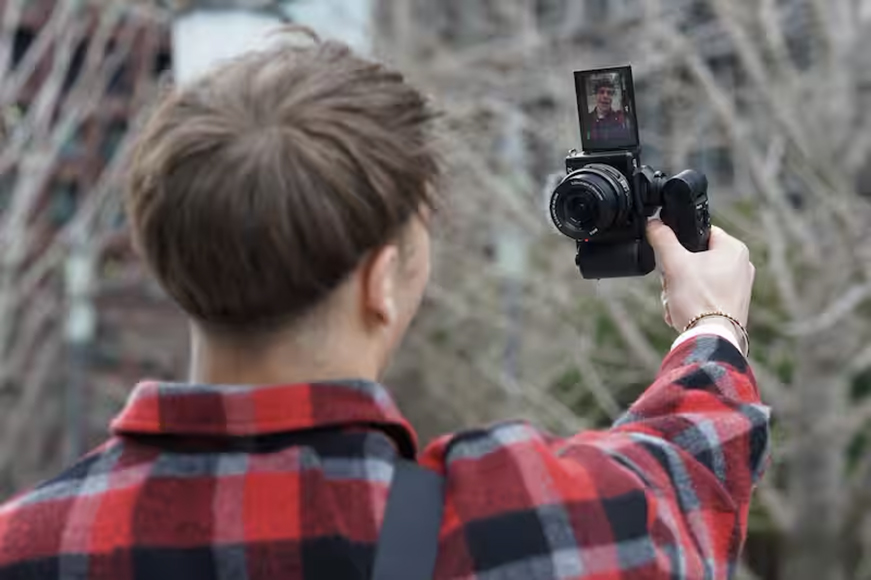
You can even shoot videos vertically with the ZV-E10 | Sony
The Sony ZV-E10 includes a directional microphone and windscreen, which gives you that all-important step up when it comes to your audio quality. There is also a headphone and a mic jack if you want to bring your own audio equipment to the recording.
The Sony ZV-E10 also comes with a few pre-built modes that make vlogging even easier. These include Product Showcase, Background Defocus, and Active Steadyshot.
The Sony ZV-E10 isn’t just built for video. This is also a capable entry-level photographic camera.
The sensor on the Sony ZV-E10 is up to 10 times larger than some smartphone sensors, which can make a huge difference if you’re looking to upgrade your photography from what your smartphone is capable of.
The autofocus also covers just above 80% of the image area, which is incredibly responsive, especially when you consider the low cost of this camera.
I could easily go on about the quality of this camera and how good it is for video and entry-level photography.
However, I have to stop this mini-review somewhere, and I’ll wrap this section by saying if you thought about getting into vlogging, this is the camera for you.
Resources:
7. Sony a7S III – Best Sony Camera for Video
- UHD 4K at 120p
- Dual card slots
- 16-bit RAW output
- 5-Axis SteadyShot image stabilization
- Unlimited recording length
- Improve heat dispersal to allow for longer recording
- Could have a higher megapixel count
- Dedicated photographers should look at other Sony alpha cameras first
Size: 128.9 x 96.9 x 69.7 mm / 5.07 x 3.81 x 2.74″ | Weight: 614 g (1.35 lb / 21.6 oz) | Sensor: Exmor R BSI CMOS Sensor | Megapixels: 12MP
The Sony a7S III is an absolutely remarkable camera when it comes to capturing video. This camera is going to give you a significant improvement to the video you’ve been capturing, whether you’ve been using a different camera or its predecessor, the Sony a7S II.
The improved 12.1MP Exmor R BSI CMOS sensor pairs with the BIONZ XR processor for higher-quality video and faster performance.
Specifically, this new model allows for a wider dynamic range and reduced noise even when pushing the ISO.
This camera is capable of a comfortable 4k at 120p. That’s outstanding video performance for everyone from wedding videographers to filmmakers.
Filmmakers are going to get a lot of mileage out of the improved dynamic range. The Sony a7S III was boosted up to 14 stops of dynamic range for photographs and 15 for the moving image.
The Sony a7S III natively records 10-bit 4:2:2 video quality, but you can use the full-size HDMI port to record at 16-bit for more information to work with when it comes time to edit.
The Sony a7S III also lets you record up to five times slow motion video thanks to being able to shoot 4K at 120 frames per second.
You can even downscale the footage to full HD for an impressive 240 frames per second slow motion recording.
This is the kind of depth you’re looking for in high-end video recording. You want to have the most information you can in a video file so that when it comes time to edit, you’ve got so much more to work with.
The build quality of the Sony a7S III is also very impressive. It shares a similar magnesium alloy chassis design as other Sony cameras in this family.
The Sony a7S III also has comprehensive weather sealing designed to protect typical points of moisture weakness, including the joints in the chassis as well as the ports themselves.
The battery life on this camera is also one of the things that impressed me the most. Even when using the LCD touch screen, you can shoot up to 600 still images or around 95 minutes of video before your battery gives out.
This is also a unique videography camera as it has two memory card slots that you can set up to act as a backup, overflow, or have them work in tandem for boosted storage.
Connectivity is the name of the game when it comes to shooting contemporary video. This camera offers Wi-Fi, Bluetooth, and NFC wireless connections in addition to having a full HDMI port, USB-C port, and a port for both headphones and microphones.
The hot shoe is now the Multi Interface Shoe which can not only provide power to external devices like a flash but is designed to integrate with certain microphones and other accessories.
Just because the Sony a7S III specialises in video doesn’t mean it’s not going to bring its a game for photography.
I’ve been impressed by the overall photographic quality of the a7S line, and the a7S III is no exception.
Videographers, filmmakers, documentarians, and anyone looking to record a high-end video should check out the Sony a7S III.
Resources:
8. Sony RX100 VII | Best All Round Point & Shoot Sony Camera
- Excellent photo quality
- UHD 4k 30fps video
- Lens has a 35mm equivalent 24-200mm focal length
- Real-time eye tracking AF
- Microphone port
- Tilting touchscreen
- Wi-Fi, Bluetooth, and NFC connectivity
- Only one lens option
- Not weather sealed
Size: 10.2 x 5.82 x 4.29 cm / 4 x 2.29 x 1.69″ | Weight: 302 g ( 0.66 lb / 10.65 oz) | Sensor: Exmor RS BSI CMOS Sensor | Megapixels: 20.1mp
I picked the Sony RX100 VII as the best all-around point-and-shoot camera because I really feel that this specific camera delivers everything you want to find in a good point-and-shoot.
Point-and-shoot cameras are all about being able to quickly capture the scene, whether you’re hiking through the woods or out with your friends.
The Sony RX100 VII has plenty of modes and features to play around with, but it’s also right there when you need it so that you don’t have to let the perfect photo or video pass you by.
With a combination of the 20.1MP 1″ Exmor RS BSI CMOS Sensor and the BIONZ X processor, you definitely get great image quality.
The lens is also worth talking about. Zeiss is legendary for making some of the best lenses in photography history, and it isn’t breaking that tradition of quality here.
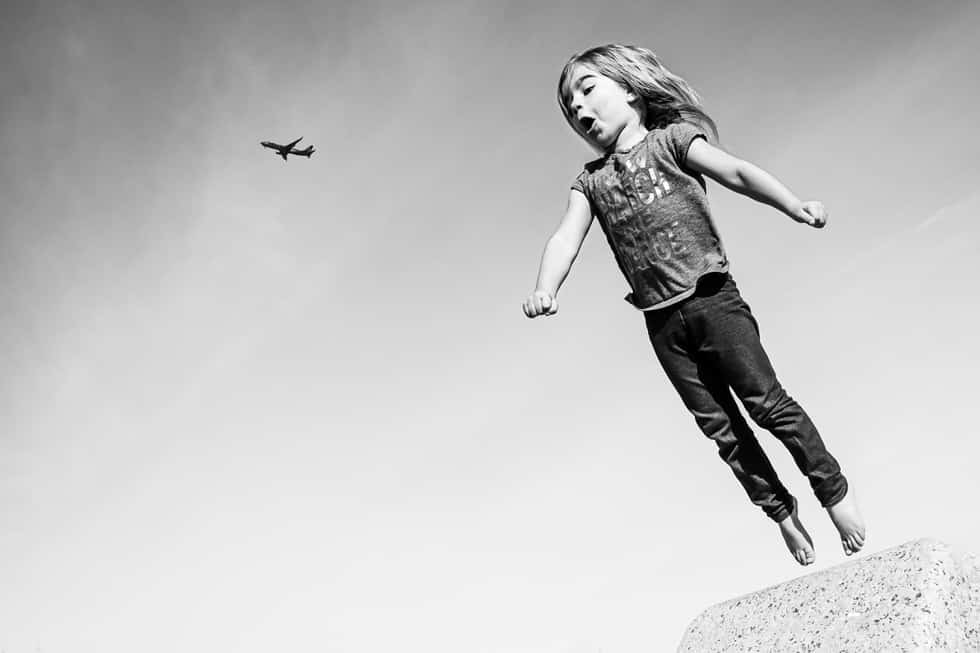
Amazing focus performance and speed from the RX100 VII | Daniel Stark
The ZEISS Vario-Sonnar T* 24-200mm Lens was a great choice for this point-and-shoot.
That focal length means you’ve got everything from bird photography to landscapes in one point-and-click package.
The f/2.8-4.5 aperture range is great to see. This means buttery smooth bokeh on your portraits, even at higher focal lengths.
The Sony RX100 VII is also more than capable of handling 4K video at 24 or 30 frames per second.
This video is surprisingly sharp, thanks to the oversampling and autofocus advancements that Sony has been making with some of their recent releases.
Fans of frame rate are going to love the Sony RX100 VII. You’ve got options to speed things up to 120 frames a second or even a staggering 960 frames per second in HFR mode.
The video-capturing software is also advanced enough to allow you to pull high-quality stills from your video footage and use them as photographs. You can pull a still photograph from a 4K video that has just over 8 megapixels in resolution.
If that’s not all, this little video machine can toggle between NTSC/PAL to shoot video worldwide!
The LCD screen is also capable of tilting out. This lets you capture more interesting shots without having to get down on the ground or sacrifice composition.
The manual control ring offers silent functioning to let you snap to your heart’s content without drawing too much attention your way—perfect for busy events!
The built-in Wi-Fi and Bluetooth connectivity make it easy to get your pics and videos off the camera when it’s time to share them with the world.
All in all, you can’t go wrong with the Sony RX100 VII for a classic point-and-shoot digital experience.
Resources:
9. Sony a6000 | Best Budget Compact Sony Camera
- Impressive 24.3MP image quality
- Full HD video at 24 and 60fps
- Interchangeable lenses
- Handles up to ISO 25600
- 11 fps consecutive shooting
- Hybrid AF with a respectable 179 phase detection points
- Very budget friendly
- Similar cameras at this price point
- Better options out there if you have the budget
Size: 64.77 x 29.97 mm / 2.55 x 1.18″ | Weight: 116 g (0.25 lb / 4.09 oz) | Sensor: APS-C Exmor APS HD CMOS Sensor | Megapixels: 24.3MP
Even if you’re shopping on a budget, you deserve to have a compact camera that can still compete with the latest releases. You don’t have to feel like you’re stuck with bargain-basement quality even if you have to stick to a strict budget.
The Sony a6000 is the Sony APSC camera that’s here to help you bridge the gap between affordability and performance.
The trick is, we’re shopping for this camera one model back in time. While there might be newer options, there isn’t much delivering on this blend of savings and image quality.
The Sony a6000 features a 24.3MP sensor and a BIONZ X processor. That’s the same processor in some of the bigger budget cameras I covered earlier in this review!
This camera shoots at 11fps and tops out at ISO 25600. That’s still a lot of ISO range, even if it isn’t quite as much as the higher-budget cameras.
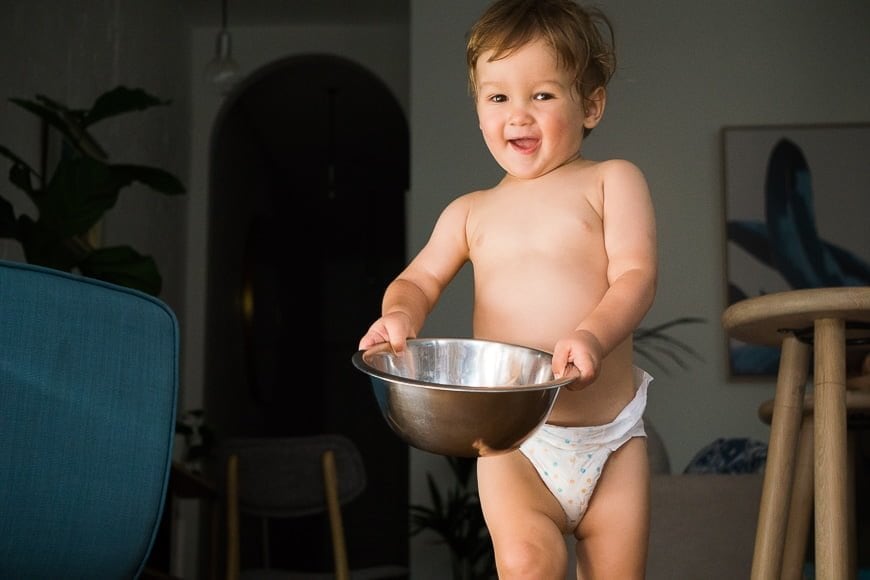
a6000 + 55-210mm f/4.5-6.3 | 1/320 at f/5.6 ISO 3200 | When viewed at normal sizes, ISO 3200 looks great!
Unlike other budget-friendly cameras, you’re not going to be stuck with just one lens. This camera lets you switch out for any compatible Sony E-mount lens.
The tilting LCD screen is another feature that lets you make the most of a budget compact camera. You can tilt that screen to match your needs—improving low or high-angle photography.
You’ve also got a lot of video power in this budget camera. It can shoot up to Full HD 1080i/p video at 24, 30, or 60fps.
Fast autofocus times are always good to see, and the Sony a6000 can handle focussing in as little as 0.06 seconds. That’s fast enough to catch all but the quickest subjects.
The body of the Sony a6000 has features that will make you feel like you’re shooting on a more expensive camera, including the familiar Sony layout with customizable buttons.
Built-in Wi-Fi and support for Class 10 SD cards means it’s pretty easy to get images and video off of this compact camera.
There is no messing around with clunky menus often associated with budget cameras here, just your standard Sony interface.
All in all, you can pick up the Sony a6000 today and save a lot of money without compromising too much on photo and video quality.
Resources:
- Sony a6000 review
- Sony a6000 vs a5000
- Sony a6000 vs a5100
- Best Sony a6000 lenses
- Best Sony a6000 accessories
Frequently Asked Questions
- Are Sony cameras good for beginners?
Yes, Sony has a range of cameras suitable for beginners. The Sony Alpha A6000, for example, is often recommended for its ease of use, compact size, and impressive image quality.
- What is the difference between Sony Alpha and Sony Cyber-shot series?
Sony Alpha series are interchangeable lens cameras, which include both mirrorless models and DSLRs. They’re designed for a range of users, from beginners to professionals. The Cyber-shot series, on the other hand, is Sony’s line of point-and-shoot, compact cameras.
- How do I update the firmware on my Sony camera?
Firmware updates are released on Sony’s official website. You’ll need to download the correct firmware for your camera model, connect the camera to your computer via USB, and run the firmware updater.
- Does Sony offer professional-grade cameras?
Absolutely. Sony’s Alpha series, especially the A7 and A9 lines, offers several professional-grade camera models.
- What lenses are compatible with Sony cameras?
Sony E-mount lenses are compatible with Sony’s mirrorless cameras. A-mount lenses are used for Sony’s DSLT cameras but can also be used on E-mount cameras with an adapter.
- How does Sony’s mirrorless technology compare with DSLR cameras?
Mirrorless cameras like Sony’s Alpha series typically offer faster burst shooting, better video quality, and a smaller, lighter body than DSLRs. However, DSLRs often have better battery life and a wider selection of lenses.
- How good is Sony’s image stabilization?
Sony’s SteadyShot INSIDE image stabilization is well-regarded. It’s a sensor-shift type of stabilization which works with any lens you attach to the camera.
- Can Sony cameras shoot 4K video?
Many of Sony’s recent cameras, including models in the Alpha and RX series, are capable of shooting 4K video.
- What is Sony’s Real-time Eye AF and Real-time Tracking?
These are advanced autofocus features available on many newer Sony cameras. Real-time Eye AF focuses automatically on a subject’s eyes, and Real-time Tracking uses AI-based algorithms to track moving subjects.
Final Words on Sony Alpha Cameras
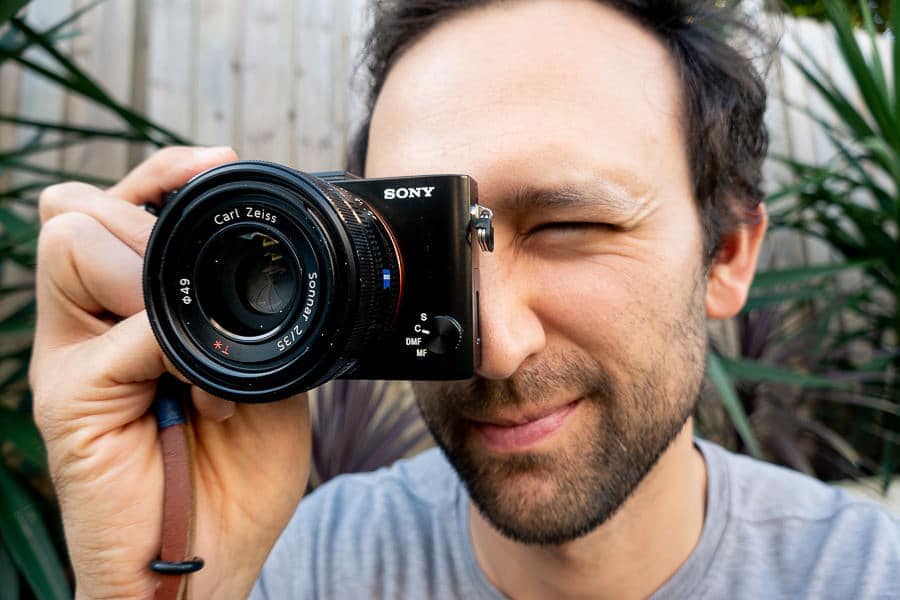
One of my favourite Sony cameras is the quirky Sony RX1R II.
One thing that worried me about writing this guide to the best Sony cameras of the year is that deep down, I know that the next Sony E-mount camera’s release is right around the corner!
This is what makes Sony such an exciting brand to shoot with – constant, regular innovation and cameras with features that rewrite the rule book with every new release.
One thing I’m happy about is Sony’s ‘Kaizen’ approach to continuous improvement, which means that no matter which camera you invest in, you can expect some impressive firmware updates.
Take ‘real-time AF‘ for example – this freely downloadable update further improved the already impressive AF performance of several of the Alpha cameras… and we didn’t even ask for it!
I hope you enjoyed this article. Feel free to leave me a comment or question below ;-)

The best value all purpose Sony camera for pros and serious amateurs who demand the perfect balance of excellent image quality and fast performance.





